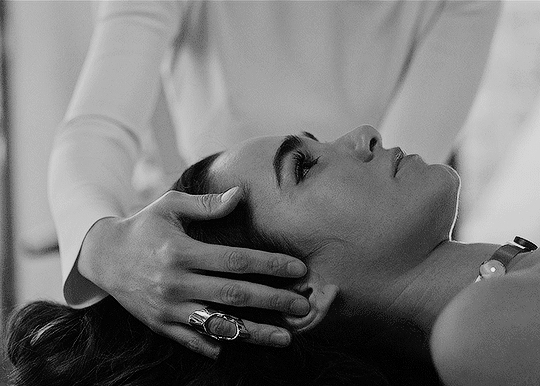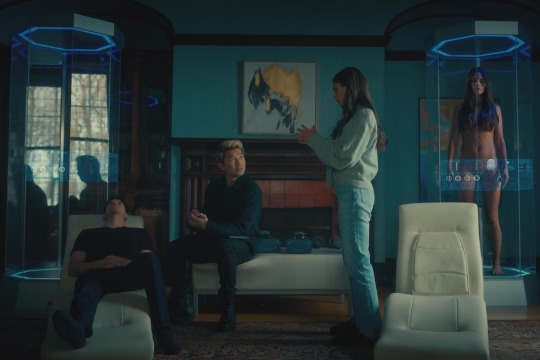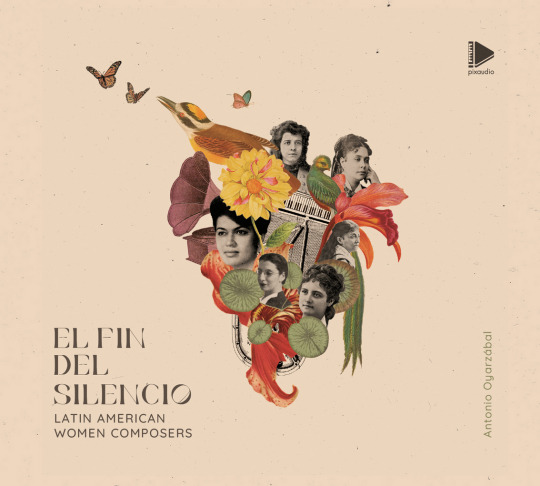#Alicia Sanz
Explore tagged Tumblr posts
Text
I've been listening to Sherlock and Co. and because my autistic brain can't be normal about anything, I present to you:
Truly's Sherlock and Co. Fancast!!!
Sherlock: Assad Zaman!



Now I, like many people, was introduced to Assad through Interview With A Vampire and I, like many people, am completely flabbergasted by this man's ability!
While I think it is important for autistic people to play autistic characters, we also can't expect actors to be open with their diagnosis. He is gorgeous, he is versatile, and most importantly, he is passionate about his work. By that I mean, a total nerd.
He is how I picture Sherlock in my mind and I *just know* he would do the role justice.
John Watson: John Boyega



HEAR ME OUT!
This is because his name is John! Its actually based on his performance as Finn in the Star Wars movies. He could totally play John, also I feel like his tattoos would add an extra layer to our awkward retired army doctor.
Before someone yells "diversity casting!!" because this is the internet, he was actually the only actor that came to mind when I thought about people capable to play John. I was seriously struggling until he popped up for me during my search. It just works.
Mariana: Alicia Sanz



Gorgeous, beautiful woman.
Okay but really the reason I picked her is because she's an actress that is actually from Spain and looks how I picture Mariana. I haven't actually seen her act in anything and it doesn't matter! Mariana is literally just a girl! (Not in a diminutive way, they slang way)
I often find that Hispanic and Latina women are often sexualized to the extreme (I know because I am one) and Mariana is a nice break from that. She also has such a nice natural hair texture AND the quintessential Spanish high forehead!
I also wanted to stay away from casting Latina women because of both colonialism and the assumption that everyone from all Hispanic countries looks the same. Spoilers, they do not, people think I'm Persian.
That is all, thank you for coming to my ted talk!
#sherlock and co#sherlock fandom#sherlock and john#mariana ametxazurra#sherlock holmes#john watson#sherlock and co podcast#fancast#assad zaman#john boyega#alicia sanz
23 notes
·
View notes
Text









Random Actress icons
‒ like or reblog if you save
#emilia attias#emilia attias icons#julieta poggio#julieta poggio icons#alicia sanz#alicia sanz icons#emilia mernes#emilia mernes icons#oriana sabatini#oriana sabatini icons#emily blade#emily blade icons#lisa vicari#lisa vicari icons#eliza scanlen#eliza scanlen icons#hermione corfield#hermione corfield icons#random actress#random actress icons#random icons#icons
8 notes
·
View notes
Text

Urraca (Alicia Sanz) El Cid (2020-).
12 notes
·
View notes
Photo




Alicia Sanz as Esmé in Simulant (2023) dir. April Mullen
#aliciasanzedit#alicia sanz#simulant#simulantedit#filmedit#gif#gifs#mine#alicia sanz gif#alicia sanz gifs#esmé
35 notes
·
View notes
Text

Simulant (dir. April Mullen).
There's an overall generic quality to the Canadian indie sci-fi thriller about advanced humanoid robots replicating their human counterparts. Despite some cool production design and a talented cast of name actors, Mullen's film feels derivative or even overly simplified compared to staples of the genre its replicating.
#simulant#simulant movie#reviews#movie#movies#movie review#film#film review#cinema#vod#video on demand#simu liu#robbie amell#april mullen#jordana brewster#sam worthington#toronto#toronto film#vertical entertainment#alicia sanz
4 notes
·
View notes
Text
Urraca de Zamora // I'm not afraid
youtube
1 note
·
View note
Text
SHUDDER ANNOUNCES ACQUISITON OF HOME INVASION HORROR "PUSH"
SHUDDER ANNOUNCES ACQUISITION OF HOME INVASION HORROR PUSH New Film from THE BOY BEHIND THE DOOR Filmmakers Stars Alicia Sanz and Raúl Castillo Shudder, AMC Networks’ premium streaming service for horror, thrillers and the supernatural, today announced the acquisition of PUSH, from the filmmakers of acclaimed indie thriller THE BOY BEHIND THE DOOR and DJINN, David Charbonier and Justin Powell.…
#Alicia Sanz#News#Push#Raúl Castillo#Shudder#Shudder Announces Acquisition of Home Invasion Horror PUSH#THE BOY BEHIND THE DOOR
0 notes
Photo

Title: #realityhigh
Rating: NR
Director: Fernando Lebrija
Cast: Nesta Cooper, Keith Powers, Alicia Sanz, Jake Borelli, Anne Winters, Kate Walsh, John Michael Higgins, Rebekah Graf, Peter Gilroy, Alejandro Edda, Kellen Michael, David St. James, Michael Provost, Patrick Davis Alarcón, Ryan Malaty, Valarie Rae Miller, Jeffrey D. Sams, Leah Rose Randall, Marissa Cuevas, Thomas Anthony Jones
Release year: 2017
Genres: comedy, romance
Blurb: When nerdy high schooler Dani finally attracts the interest of her longtime crush, she lands in the crosshairs of his ex, a social media celebrity.
#realityhigh#nr#fernando lebrija#nesta cooper#keith powers#alicia sanz#jake borelli#anne winters#2017#comedy#romance
1 note
·
View note
Photo
@asongofstarkandtargaryen



Quick question: is Augustine some kind of white noise for Elvira? Because Urraca’s plan (2x05) worked, which means Elvira knows Latin no better than Sancho, since she was present when the “vows” were pronounced. (Also, it wasn’t “some cautions from Seneca against gluttony”, it was De Ira! And quite a telling quote, considering how Alfonso and Sancho feel about each other.)
#El Cid#El Cid 2020#El Cid Amazon Prime#period drama#Alfonso VI de León#Don Bernardo#Elvira de Toro#Urraca de Zamora#Alfonso VI of León#Alfonso VI of Leon#Elvira of Toro#Urraca of Zamora#Jaime Olías#Lucía Díez#Juan Echanove#Alicia Sanz#El Cid 2x03#El Cid 2x05
18 notes
·
View notes
Text



Although the king knew he had the unconditional love of his half-sister wife, the jealousy he harbored for the deep relationship the queen had with her dear uncle was notorious across the kingdom.
#tom glynn carney#alicia sanz#aneurin barnard#incestuous#incestuous story#incestuous love story#fantasy story
15 notes
·
View notes
Text
Americanas en un piano

[El pianista Antonio Oyarzábal (Bilbao, 1989) / LEONARDO GONZÁLEZ ALCALÁ]
El pianista bilbaíno Antonio Oyarzábal publica un álbum con música de veintiuna compositoras iberoamericanas
En su tercer álbum, el pianista vasco afincado en Londres Antonio Oyarzábal (Bilbao, 1989) se había acercado con el título de La muse oubliée a música de compositoras clásicas europeas, la mayoría bastante conocidas ya. Con el cuarto ha dado un salto hasta Iberoamérica para ofrecer música de veintiuna compositoras nacidas en once países diferentes (incluidos España y Estados Unidos), aunque esta vez muy infrecuentes en las programaciones. Citemos sus nombres: Lía Cimaglia, Cecilia Arizti, Adelaide Pereira da Silva, María Luisa Sepúlveda, Alicia Terzian, Lita Spena, Carmela Mackenna, Rocío Sanz Quirós, Graciela Agudelo, Modesta Sanginés, Rosa Mercedes Ayarza, Rosa Guraieb, María Teresa Prieto, Kilza Setti, Isabel Aretz, María Luisa Escobar, Teresa Carreño, Teresita Carreño-Tagliapietra, Clarisse Leite, Modesta Bor y Chiquinha Gonzaga.
–¿Qué pretende con este proyecto?
– Es la exploración en torno a un grupo de compositoras latinoamericanas de los últimos 150 años. Habiendo grabado ya La musa olvidada con IBS, he seguido muy activamente con mis investigaciones en torno a música de mujeres y puse el foco en una serie de obras que escuché y me interesaron mucho de Modesta Bor, una compositora venezolana muy importante. Les comenté el descubrimiento a unos colegas que viven en Londres, donde tienen un sello discográfico y una empresa de vídeos profesionales para músicos que se llama Pixaudio. El dueño de la empresa es venezolano y el ingeniero de sonido, argentino. Ellos me animaron y entre todos pusimos en marcha este proyecto que rápidamente se extendió a todas estas compositoras.
–El fin del silencio, ¿de dónde procede el título?
–Me lo dio la escritora Anna Beer, la autora de un libro que se hizo muy famoso, y está en español, Armonías y suaves cantos. Somos amigos, y fue ella la que me proporcionó en 2021 el título para este disco.
–¿Y de dónde sale toda esta música, pues salvo alguna excepción (Teresa Carreño o María Teresa Prieto, en este caso para nosotros, por ser asturiana de nacimiento) son músicas muy poco conocidas?
–Sí, pero la misma Prieto se consideraba más mexicana que española, que es algo que me dijo su biógrafa. Fue la parte más difícil del proyecto. Muchos meses de investigación tanto online como en bibliotecas. Vivo en Londres, tengo cerca la British Library y suelo ir a menudo. Pero luego además han funcionado mucho los amigos hechos durante el proceso. Por ejemplo, las partituras de la costarricense Rocío Sanz Quirós las conseguí por contactos con personas que llevan allí archivos de músicos, conocí también a un japonés que comparte intereses conmigo y me mandó mucho material. La recopilación fue un proceso largo y complejo. De allí salió una montaña de obras y la criba de aquello terminó en este programa.

–Se trata de una panorámica amplia: la compositora más antigua (Sanginés) nació en 1832 y luego hay un par de ellas nacidas en los años 1930 y aún vivas (Terzian y Setti). ¿Hay líneas estilísticas que puedan seguirse a lo largo del disco?
–Hay varias líneas. Muchas de estas mujeres viajaron a Europa para nutrirse de las diferentes corrientes musicales del continente, y lo que hacen muy bien es fundir este aprendizaje con el acervo folclórico de cada país, y hacerlo muy distintivo. Luego también hay una consciente narrativa en el CD: hacia la segunda mitad se empieza a hablar de la infancia. Hay una relación muy bonita, no conozco otro disco en el que se junte a Teresa Carreño con su hija Teresita Carreño-Tagliapietra. Está la nana de la propia Carreño, otra de la brasileña Clarisse Leite o las piezas de Kilza Setti, brasileña también. Me gustó mucho hacerlo así. Surgió de forma muy natural. Y me llevó a ese primer disco que grabé, The Inner Child (El niño interior), esa nostalgia por el pasado. El objetivo del CD no es ese, pero contar esta historia me pareció bonito.
–Se aprecian rasgos de diferentes tendencias europeas del siglo XX, romanticisimo, impresionismo, neoclasicismo… Hecho en falta referencias más vanguardistas…
–Por un lado, sí creo que hay algunas obras que hacen uso de un lenguaje más modernista, como las Evoluciones de Rocío Sanz Quirós, quizá no en el Moderato, que es un vals que nos lleva a Satie, pero el Allegro anterior tiene elementos atonales, o la Scriabiniana de la mexicana Rosa Guraieb, en la que la mano derecha está en una tonalidad y la izquierda en otra, con claves distintas. Pero es cierto que dominan los lenguajes románticos o impresionistas, como los Preludios de Lita Spena, por ejemplo. Me siento mucho más cómodo con esos lenguajes que con músicas más vanguardistas.
youtube
–¿Ha presentado esta música en concierto?
–El disco lo presentaré en Mánchester el próximo 26 de octubre y posiblemente en Londres también en otoño (aunque esto está sin cerrar). Toco mucho la Noche de luna en Altamira de la venezolana María Luisa Escobar y Días de lluvia de la mexicana Graciela Agudelo. Pero como tal, el programa del CD no lo he tocado nunca. Lo he propuesto, pero hasta ahora no ha salido, no ha generado aún el mismo interés que La muse oubliée, y me refiero sobre todo a España, aunque quizás aún sea pronto.
–¿Ha tocado mucho en América?
–Recientemente lo he hecho en Los Ángeles y Florida con proyectos más cercanos a La muse oubliée, aunque incluyendo esas dos piezas que le he dicho. Para Latinoamérica tengo planes, pero de momento no he estado.
–¿Rescata música de mujeres por convencimiento de que hay que hacerlo o este repertorio se ha convertido hoy en un simple nicho de mercado?
–Llevo tocando este repertorio muchos años. Con 14 estaba estudiando a Jacquet de la Guerre al clave. No me gustan las cuotas esas de incluir en cada recital una pieza breve de una compositora. Tengo el convencimiento de que hay que poner un poco de justicia con repertorio que ha sido relegado a las sombras. Y de hecho hay ya un segundo CD de La muse oubliée grabado con IBS.
–¿Compositoras nuevas?
–Todas son distintas a las del primer volumen.
–¿Nos movemos en el mismo ámbito temporal, siglos XIX y XX?
–Sí, y me voy incluso algo más atrás, porque hay una sonata de Mariana Martínez.
[Diario de Sevilla. 20-08-2023]
EL FIN DEL SILENCIO EN SPOTIFY
#antonio oyarzábal#pixaudio#Lía Cimaglia#Cecilia Arizti#Adelaide Pereira da Silva#María Luisa Sepúlveda#Alicia Terzian#Lita Spena#Carmela Mackenna#Rocío Sanz Quirós#Graciela Agudelo#Modesta Sanginés#Rosa Mercedes Ayarza#Rosa Guraieb#María Teresa Prieto#Kilza Setti#Isabel Aretz#María Luisa Escobar#Teresa Carreño#Teresita Carreño-Tagliapietra#Clarisse Leite#Modesta Bor y Chiquinha Gonzaga#Youtube#Spotify#música#music
0 notes
Note
Hi, please can you suggest some alt fcs for Lily Collins, please? Thank you so much!!
Jessica Lucas (1985) Black Canadian / White.
Alba Flores (1986) Romani, Spanish [including Andalusian] - is a lesbian - has spoken up for Palestine!
Jenna Coleman (1986)
Jodi Balfour (1986) - is queer - has spoken up for Palestine!
Lashana Lynch (1987) Afro Jamaican.
Heida Reed (1988)
Alicia Sanz (1988)
Parveen Kaur (1988) Punjabi Indian.
Aiysha Hart (1988) Saudi Arabian and White - has spoken up for Palestine!
Monica Barbaro (1989) part Mexican.
Úrsula Corberó (1989)
Mishel Prada (1989) Puerto Rican, Dominican Republic, and Mexican [Spanish, Portuguese, African, Indigenous], some French - has spoken up for Palestine!
Lorenza Izzo (1989)
Lucy Hale (1989)
Pooja Hegde (1990) Indian.
Poppy Liu (1990) Chinese - is non-binary (she/they) - has spoken up for Palestine!
Gia Mantegna (1990)
Sofia Black-D'Elia (1991) part Ashkenazi Jewish.
Eve Hewson (1991)
Jeanine Mason (1991) Cuban.
Charlotte Nicdao (1991) Filipino.
Tanya Reynolds (1991) - has spoken up for Palestine!
Hari Nef (1992) Ashkenazi Jewish - is trans - has spoken up for Palestine!
Laysla De Oliveira (1992) Brazilian.
Anna Shaffer (1992) Black and White / Jewish - has spoken up for Palestine!
Medalion Rahimi (1992) Iranian, Iranian Jewish - uses she/they - has spoken up for Palestine!
Jessica Henwick (1992) Chinese Singaporean / White.
Davika Hoorne (1992) Thai / White.
Humberly González (1992) Venezuelan.
Joana Ribeiro (1992) - has spoken up for Palestine!
Emilia Schüle (1992)
Cassandra Naud (1992)
Jessica Plummer (1992) Afro Jamaican / White.
Nava Mau (1992) Mexican - is trans.
Jess Bush (1992) - has spoken up for Palestine!
Maia Mitchell (1993) - has spoken up for Palestine!
I hope this helps you out anon!
5 notes
·
View notes
Text

2024年9月18日
【新入荷・新本】
Switched On: The Dawn of Electronic Sound by Latin American Women, Contingent Sounds, 2024
English. 210 pages. Hardcover. Cloth covered. 17 x 23.5 cm. 0.65 kg.
Edited by Luis Alvarado and Alejandra Cárdenas.
価格:4,950円(税込)
/
ラテンアメリカの女性の電子音楽家を特集した初めての書籍。1960年代から1980年代にかけて活躍したラテンアメリカの女性アーティストによる初期の電子音楽制作を中心としたエッセイ、インタビュー、アーカイブ写真、作品評などで彼女らの業績を紹介しています。
アルゼンチンのBeatriz Ferreyra、コロンビアのJacqueline Nova、ブラジルのJocy de Oliveira、ベネズエラのOksana Lindeらのアーティストが掲載されています。
Switched On is the first book dedicated exclusively to the female protagonists of Latin American electronic music. The book has been edited by independent curator, researcher and label head of Buh Records, Luis Alvarado, and experimental musician, multimedia artist and researcher Alejandra Cardenas (also known as Ale Hop).
Composers and sound artists featured in this historical account include: Alicia Urreta, Beatriz Ferreyra, Elsa Justel, Eulalia Bernard, Graciela Castillo, Hilda Dianda, Ileana Pérez Velázquez, Irina Escalante Chernova, Iris Sagüesa, Jacqueline Nova, Jocy de Oliveira, Leni Alexander, Margarita Paksa, Marietta Veulens, Mónica O’Reilly Viamontes, Nelly Moretto, Oksana Linde, Patricia Belli, Renée Pietrafesa Bonnet, Rocío Sanz Quirós, Teresa Burga, Vania Dantas Leite, among others.
The official history of 20th-century avant-garde electronic music has been predominantly narrated from the point of view of Anglo-American and Western European experiences and largely remained focused on its male protagonists. To destabilize this history, this editorial project presents a collection of perspectives, essays, interviews, archival photos, and work reviews centered on the early electronic music production by Latin American female creators, who were active from the 1960s to the 1980s.
3 notes
·
View notes
Photo




Alicia Sanz as Esmé in Simulant (2023) dir. April Mullen
29 notes
·
View notes
Text

Cast Spanish voice actors in Tadeo Jones 4 La Odessa de la Cristal
@jakkiisthatboy2
Tad: Oscar barberan
Sara: Michelle Jenner
Mummy: Luis posada
Tiffany maze: Adriana Ugarte
Joya/Ramona: Ana ester Aalborg
Victoria: Alexandra Jiménez
Ramirez: Cecilia Suárez
Reena Roberto Ramirez: Clara lago
Lukas: Tamar novas
Jessica/Anne: Berta Cortes
Jasmine: Irene escolar
Amy: Diana Gomez
Max mordon: pep Aton Munoz
Jack rackham: Miguel angel jenner
Sam pickles: Tito Valverde
Tiffany mordon: Dafne keen
Blair: Penelope Cruz
Ying: Elsa pataky
Andrea: Alicia Sanz
Rina: Dafne frenandez
Other voices:
Minnie: Elena anaya
Ruth/Kevin: Eugenio derbez
Christopher: fele Martínez
Jessica: victoria abril
Ninja/Chai: Carmen Maura
Flora: Marisa paredes
Nagham: Danna Paola
Kelsey: Carmen Maura
Charlie/agent Justin/Roger: sergi Lopez
Snowy: Adriana Barraza
Jeremy: Diego boneta
Agent Lou/Kenny: Michael pena
Agent nick: Antonio banderas
1 note
·
View note




